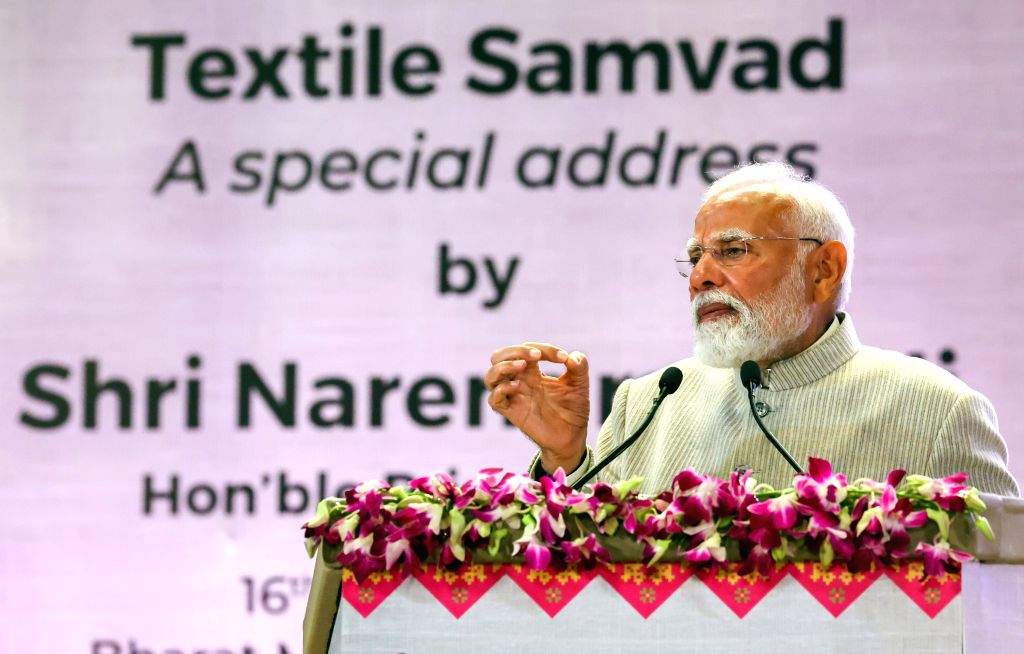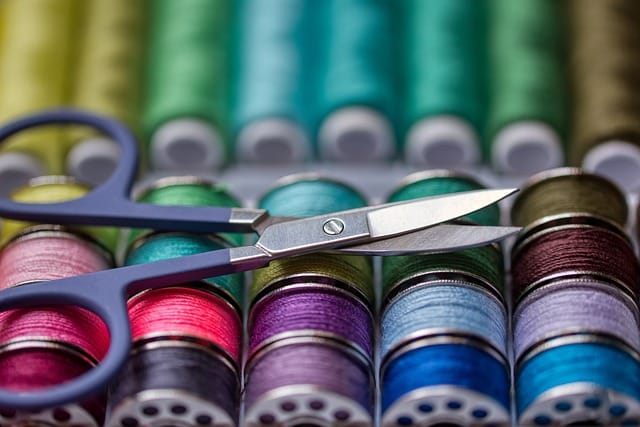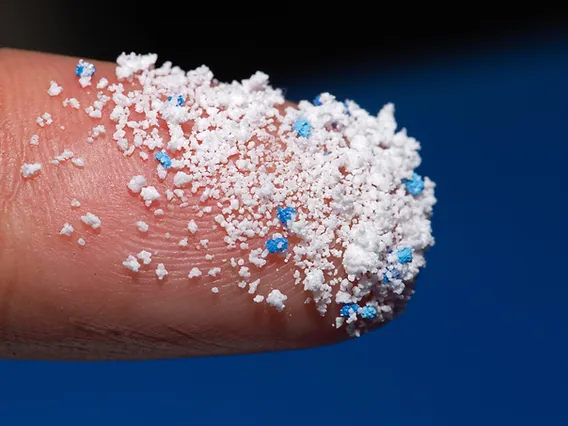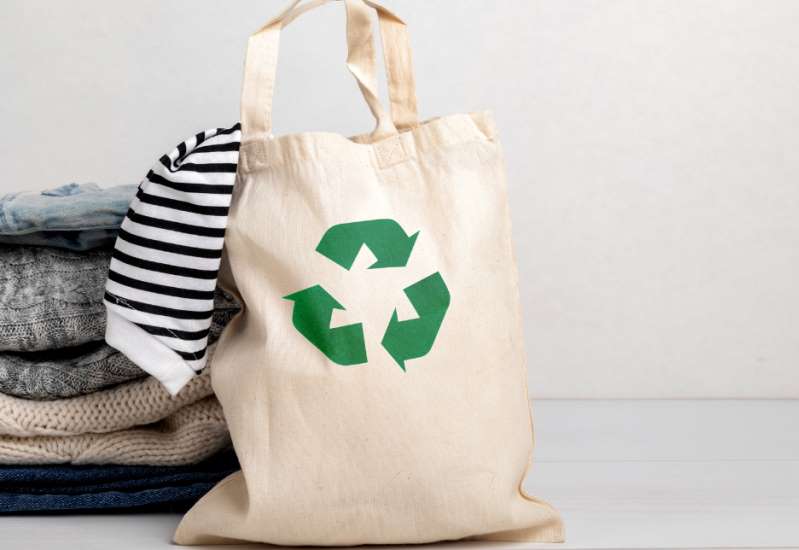FW
Parent company of Calvin Klein and Tommy Hilfiger, PVH has been added to the ‘unreliable entities’ list of China's Ministry of Commerce (MOFCOM). According to MOFCOM, PVH undermines market rules and violates Chinese laws.
This designation could potentially shut down all of PVH's business operations in China, although no specific sanctions have been announced yet, and PVH has a timeframe to present its defense.
PVH is the first fashion brand to receive this designation, typically reserved for companies in defense and biotech, such as Illumina, which was also recently added to the list. This move comes amidst escalating US-China trade tensions and follows the Trump administration's 10 per cent tariff on Chinese imports. MOFCOM has been investigating PVH's China operations since September.
In its 20 years of operating in China and serving customers, PVH has always maintained strict compliance with all relevant laws and regulations and operates in line with established industry standards and practices, a company’s spokersperson. It will continue engaging with relevant authorities and looks forward to a positive resolution, he adds.
The MOFCOM decision appears to stem from PVH's ban on the use of cotton from China's Xinjiang region, aligning with US government’s import restrictions imposed in 2020. Experts suggest that China is using PVH as an example in the ongoing trade dispute.
While Stefan Larsson, CEO, PVH emphasizes on the importance of the Chinese market for retail growth (the Asia-Pacific region accounted for approximately 20 per cent of PVH’s $9.2 billion in revenue in fiscal year 2023), the greater threat may be to PVH’s manufacturing capabilities.
The company operates 128 factories in China, producing approximately 20 per cent of its goods. Shifting manufacturing could be disruptive, impacting quality and production processes, according to analysts. PVH also has manufacturing facilities in Vietnam, Turkey, and other countries.
Experts speculate, PVH was targeted due to its size—large enough to make a statement, but not as large as other US brands like Nike or Gap, which also have policies against using Xinjiang cotton. Tommy Hilfiger and Calvin Klein have a significant retail presence in the Asia-Pacific region, with thousands of stores.
Neil Saunders, GlobalData, opines, China is using PVH as an example to say, look, if tariffs go ahead, if other restrictions are put in place on China, we can make life difficult for US companies in the country.

PM Narendra Modi inaugurated Bharat Tex 2025 at Bharat Mandapam, highlighting India’s textile heritage and expanding global reach. He toured the exhibition and praised Bharat Tex for evolving into a major international event. This edition featured exhibitors across the full textile value chain, from accessories to machinery, chemicals, and dyes.
Addressing industry leaders and stakeholders, Modi called Bharat Tex a vital platform for global collaboration among policymakers, CEOs, and entrepreneurs. He noted the participation of 120 countries, offering Indian businesses key exposure to international markets. Many exhibitors from last year reported securing new buyers and expanding their reach. The Prime Minister urged the banking sector to support textile entrepreneurs to drive further growth and employment.
Textile industry’s global expansion and economic contribution
Modi outlined India's textile sector growth, reporting a 7 per cent rise in exports last year, making India the sixth-largest textile exporter. He set an ambitious goal of tripling exports from Rs 3 lakh crore to Rs 9 lakh crore by 2030. Foreign investment in textiles has doubled in a decade, now contributing 11 per cent to India's manufacturing sector.
The Prime Minister highlighted the Mission for Cotton Productivity, aimed at making Indian cotton globally competitive and strengthening the entire value chain. He also pointed to initiatives in technical textiles, including the development of indigenous carbon fiber. With MSMEs contributing 80 per cent of textile production, expanded credit access and revised classifications in the latest budget will boost growth.
Modi emphasized the role of skill development, noting efforts by National Centres of Excellence and the Samarth scheme to upskill artisans and workers. Handloom promotion remains a priority, with 2,400+ marketing events in the past decade and the launch of the India-hand-made e-commerce platform. He also highlighted the benefits of GI tagging in promoting traditional crafts.
Sustainability, innovation, and the future of Indian textiles
Sustainability remains a key focus for the textile industry. Modi warned that global fashion waste could reach 148 million tons by 2030 and called on India's textile industry to lead in recycling and upcycling. He highlighted traditional practices like rug and quilt-making from old fabrics and announced a government-backed textile waste collection and recycling initiative. India’s textile recycling market is projected to reach $400 million soon.
The Prime Minister urged industry leaders to blend tradition with innovation, encouraging young entrepreneurs to create products inspired by Indian textiles. AI and technology, he noted, are reshaping fashion trends and textile design. He linked India’s sustainable fashion leadership to global discussions on climate change and responsible consumption. Modi expressed confidence that Bharat Tex would drive future industry growth, reiterating India's commitment to strengthening its textile sector. He emphasized its historic role in India's prosperity and its potential to drive economic growth.
Bharat Tex 2025 (Feb 14-17) is among the largest global textile events, drawing policymakers, industry leaders, and 5,000+ exhibitors. It features exhibitions, conferences, panel discussions, startup pitch fests, and innovation challenges to drive investment and technological advancement. More than 25 global textile organizations, including ITMF, ICAC, EURATEX, Textile Exchange, and USFIA, took part in Bharat Tex 2025.
Turkiye’s ready-to-wear clothing and apparel exports to Europe rise to $1.1 million in January: Data
Despite economic stagnation and recession concerns in the EU, Türkiye's ready-to-wear clothing and apparel exports to Europe increased to $1.1 million in January, as per data from the Turkish Exporters’ Assembly.
Compiled by the Anadolu Agency, the data shows, Turkey’s overall exports increased by 7.1 per cent Y-o-Y to $10.3 billion in January. This growth in Turkish exports to Europe was led by the automotive industry with exports worth $2.6 billion in January. Other significant export categories included chemicals and chemical products ($1.4 billion), electricity and electronics ($752.7 million), ferrous and non-ferrous metals ($767.1 million), and steel ($691.8 million).
Geopolitical tensions from the war in Ukraine and tight monetary policies to combat high inflation have created vulnerabilities in the European economy. Global tariff threats, including potential further tariffs, also impact the region.
Despite these challenges, Europe accounted for 48 per cent of Türkiye's total exports in January. Overall, Türkiye's exports grew by 5.8 per cent Y-o-Y last month, totaling $21.1 billion.
Germany was the top destination for Turkish exports, receiving $1.6 billion in January, followed by the UK ($1.1 billion), Italy ($910.5 million), France ($795.7 million), and Spain ($774 million).
Istanbul led Turkish exports to Europe, accounting for $2.9 billion in January. Other major exporting provinces included Kocaeli ($1.4 billion), Bursa ($948.8 million), Izmir ($625.1 million), Ankara ($419.2 million), and Sakarya ($385.7 million).
A global leader in developing innovative and sustainable fiber and technology solutions for the apparel industry, The Lycra Company unveiled its exclusive range of Coolmax Core fibers for the Indian market at Bharat Tex 2025.
Recognized worldwide for its permanent moisture management properties, the Coolmax Core fiber helps the wearer stay cool, dry, and comfortable. A special dyed version in filament form, the fiber is available in more than 25 shades as it provides a wide range of product development opportunities across the apparel industry’s value chain.
The fiber improves textile processing production efficiency by eliminating the fabric dyeing process, which also helps reduce the risk of effluents impacting the environment. It helps meet the increasing demand for dyed Coolmax brand yarn in India’s shirting, knitwear, and formalwear segments, says Alistair Williamson, Vice President-EMEA and South Asia, The Lycra Company. The solution enables brands to offer a cooling experience that responds to the wearer's needs, even in the most demanding climates, she adds.
British fashion brand Superdry has extended its licensing agreement with Brand Collective in Australia for a period of 12 years. The multi-million dollar royalty deal grants Brand Collective exclusive rights to the Superdry brand in the region.
This extended partnership aims to usher in a ‘new era’ of growth, with both companies targeting a doubling of revenue to AU$100 million within the next five years. The collaboration promises new collections, bold designs, and an enhanced retail experience tailored to the Australian consumer's demand for style and quality.
This extension illustrates the value Superdry places on the trust, longevity, and continuity of the relationship between the two companies, says Julian Dunkerton, Founder and CEO, Superdry. This ongoing partnership will continue to grow and strengthen the brand across Australia, he adds.
An operator of 300 stores in Australia, Brand Collective partners with 16 other retailers. Superdry joins a portfolio of fashion brands including Reebok, Review, Clarks, and Hush Puppies.
Dave Thomas, CEO, Brand Collective, states, it heartening to see Australians embracing Superdry, The partnership between these two companies will help Brand Collective create a positive future for the brand in Australia, he adds.
Bharat Tex 2025 will help strengthen India's position as a global textile leader, opines Bhadresh Dodhia, Chairman, Matexil and Co-Chairman-Core Committee, Bharat Tex 2025. The event will prove to be a game-changer for India's textile industry and a moment of national pride, he adds.
Spanning over 220,000 sq m, the exhibition showcases the entire textile value chain, from fiber and yarn to fabrics, garments, home textiles, made-ups, and technical textiles. It is being attended by exhibitors, buyers, policymakers and industry leaders from around the world.
Emphasizing on sustainability and innovation, Bharat highlights India's progress in eco-friendly textiles, digital manufacturing, and smart fabrics, notes Dodhia. The event features specialized sessions on the circular economy, digital transformation, and technical textiles, bringing together global experts.
The event has received an overwhelmingly positive response, with exhibitors and delegations from key global markets, including the US, EU, Middle East, Russia, Africa, and Southeast Asia participating in it, states Dodhia. It offers Indian manufacturers an unparalleled opportunity to showcase their capabilities, attract investment, and boost exports, he adds.

In 2024, China's polyester industrial yarn (PIY) exports soared to 559,600 tons, marking a notable 7.6 per cent year-on-year increase. This rise is due to rebounding global demand and reduced EU anti-dumping duties, has reshaped the dynamics of the global yarn market, presenting both challenges and opportunities for India's burgeoning yarn industry.
Impact on India's yarn trade
Imports from China: While specific data on the volume of Chinese PIY imported by India remains sparse India, as a significant consumer of polyester yarn, is inevitably influenced by China's export growth. The increased availability of Chinese PIY in the global market indirectly impacts India's domestic prices and availability, necessitating deeper analysis to quantify precise import volumes and their market implications.
Exports from India: Concurrently, India exported 30,145 tons of PIY in 2024, reflecting a modest increase from the previous year. However, amidst China's expanded global footprint, Indian exporters face heightened competition in international markets. Despite being among China's top 10 export destinations, India contends with challenges in maintaining competitive pricing and market share, particularly in regions where Chinese PIY is increasingly prevalent.
Table: China's top 10 PIY export markets (2023-2024)
Nation 2024 (tons) 2023 (tons) YoY change (tons) US 62,343 51,441 10,902 South Korea 55,948 49,493 6,455 Turkey 40,277 43,436 -3,159 Vietnam 37,186 27,878 9,308 Brazil 33,014 33,414 -400 India 30,145 28,616 1,529 Russia 24,286 33,493 -9,207 Belgium 20,998 15,102 5,896 Canada 19,364 18,543 821 Germany 17,818 17,174 644
The global impact of China's export growth
China's robust export performance in PIY is primarily driven by recovering demand from overseas markets, particularly in developed economies where polyester yarn is integral to sectors such as automotive, infrastructure, and transportation. The gradual relaxation of EU anti-dumping measures in 2023 further bolstered China's export capabilities, allowing its PIY exports to EU nations to rebound by 11.2 per cent year-on-year.
Moreover, China's strategic expansion in high-modulus low-shrinkage (HMLS) PIY production capacity in late 2024 has enhanced its export competitiveness, catering to diverse global markets with increased supply flexibility.
Impacts on global markets
Price fluctuations: The rise in demand and subsequent increase in both imports and exports can lead to price volatility in the PIY market. The increase in domestic supply in China could put downward pressure on global prices.
Competition: Growth of China as both a major importer (initially) and exporter intensifies competition in the global PIY market. Other producing countries need to adapt to this increased competition, potentially through innovation, cost optimization, or specialization in niche markets.
Supply chain disruptions: Trade policy changes, like anti-dumping duties, can create significant disruptions in the global PIY supply chain. Companies need to diversify their sourcing and markets to mitigate risks associated with such policies.
Technological advancements: The increasing demand for HMLS PIY highlights the importance of technological advancements in the textile industry. Manufacturers who invest in R&D and produce high-performance materials will likely have a competitive advantage.
Regional shifts in production: The data suggests potential regional shifts in PIY production. The increase in Vietnam's exports to China (before the increase in China's domestic capacity) illustrates how production can shift to take advantage of favorable conditions. The increase in China's domestic production suggests a potential move towards greater self-sufficiency.
Looking at China's PIY exports in 2025 suggests a potential moderation in growth rates following the substantial base set in 2024. For India, this means higher competitiveness through value-added products, targeted niche markets, and agile pricing strategies. Therefore, as China consolidates its position as a dominant player in the global PIY market, India's yarn industry faces a strong competition. Adapting to this growing competition requires proactive strategies that prioritize innovation, market diversification, and operational efficiency. By embracing these imperatives, India can not only safeguard its market position but also seize new opportunities amidst the evolving landscape of international trade in polyester industrial yarn.
In essence, while China's export surge poses challenges, it also beckons India to forge ahead with resilience and strategic foresight in the competitive global yarn market.

A recent report compiled by analyst Veronica Bates Kassatly and statistician. Terry Townsend, published by the Bremen Cotton Exchange, has brought to light a critical concern: the pervasive presence of microplastics in textile production, particularly within synthetic fibers, and its potential health and environmental consequences. This report expands the scope of concern beyond cotton production to include the significant contribution of synthetic fibers to the microplastic problem.
Concerning microplastics
The report emphasizes the ubiquitous nature of microplastics, tiny plastic particles less than 5 mm in size, and highlights mounting evidence of their harmful effects. It cites studies linking micro and nanoplastics to severe health issues, including myocardial infarction (heart attacks), stroke, and even death. Furthermore, the report points to research that has identified these particles in the bone marrow of leukemia patients and, alarmingly, in the brains of individuals with dementia, including Alzheimer’s disease, with concentrations in some brain samples up to ten times higher by weight than in healthy samples.
A key aspect of the concern surrounding synthetic fibers is the vast number of chemicals associated with them. The report notes that approximately 2,566 chemicals are either used in, present in, or released from PET (polyethylene terephthalate), a common synthetic fiber. Disturbingly, hazard data exists for only a small fraction of these chemicals. While 31 are known to be non-hazardous, 31 per cent are known to be hazardous, leaving the majority with unknown potential for harm. This lack of data underscores the urgent need for further research into the toxicity of these chemicals.
Micofiber hazard
The report stresses that plastic microfibers pose a distinctly different hazard compared to other microfibers and should be treated accordingly in Life Cycle Assessments (LCAs) and Product Environmental Footprints (PEFs). Recognizing this crucial distinction, the European Commission’s March 2024 resolution on the Green Claims Directive mandates that the PEF for Apparel and Footwear incorporate a microplastic assessment.
A significant challenge highlighted in the report is the influence of vested interests on the assessment of microfiber impact. The report points out that the sources used by both the French and EU PEFs to evaluate this impact are not independent scientific organizations but rather entities created and funded by stakeholders deeply involved in the production of plastic apparel. This conflict of interest undermines the scientific integrity of environmental legislation and hinders effective solutions to long-term environmental problems.
Bates Kassatly and Townsend recommend that fashion value chain LCAs/PEFs clearly state that plastic fibers contain hazardous chemicals and that these fibers can lead to exposure to various chemicals throughout the product's lifecycle. They go so far as to suggest that, similar to the health warnings on tobacco product packaging, a warning label should be mandatory on point-of-sale packaging for all products containing synthetic fibers. This recommendation underscores the seriousness of the issue and calls for greater transparency and consumer awareness.
In conclusion, the report by Bates Kassatly and Townsend provides compelling evidence of the potential dangers of microplastics, particularly from synthetic fibers, and their impact on human health and the environment. It calls for a shift towards greater scientific independence in environmental assessments, more comprehensive research into the toxicity of chemicals used in synthetic fiber production, and increased transparency in labeling to empower consumers to make informed choices.
The textile and apparel industry, an important pillar of India’s GDP and a major employment generator, stands at a critical juncture. While it boasts of a rich heritage and a large workforce, it faces immense competition from other countries and to maintain its competitive edge, a skilled workforce is important.
The imperative of skills development
The industry is dynamic, constantly evolving with technological advancements, changing fashion trends, and increasing sustainability concerns. India's workforce, while abundant, needs continuous upskilling to meet these evolving demands. Traditional skills are no longer sufficient. Workers need to be proficient in operating modern machinery, understanding digital technologies, and adhering to international quality standards. The skills gap is a significant impediment to the industry's growth. A study by the National Skill Development Corporation (NSDC) estimates that the textile and apparel sector will require an additional 12.8 million skilled workers by 2025.
Initiatives for upskilling and training
Recognizing the criticality of skills development, the government has launched several initiatives to upskill textile workers. The Skill India Mission, a flagship program, has played an important role in promoting vocational training and creating a skilled workforce across various sectors, including textiles. Schemes like the Pradhan Mantri Kaushal Vikas Yojana (PMKVY) provide financial assistance for training and skill development programs.
The Ministry of Textiles has implemented various schemes specifically aimed at the textile sector. The Scheme for Capacity Building in Textile Sector (SCBTS) focuses on providing industry-relevant training to workers in various segments of the textile value chain.
Need for industry partnerships
Vocational training institutes (VTIs) play a crucial role in bridging the skills gap. Institutes like the National Institute of Fashion Technology (NIFT), the Central Institute of Textile and Apparel (CITA), and various state-level textile institutes provide specialized training in different aspects of the industry. These institutes offer diploma, degree, and certificate courses that equip students with the necessary technical and managerial skills.
However, the effectiveness of VTIs can be enhanced through stronger industry partnerships. Collaboration between VTIs and textile companies can ensure the training curriculum is aligned with the industry's needs.
The Apparel Training and Skill Development Centre (ATSDC), a joint initiative of the Apparel Export Promotion Council (AEPC) and the Ministry of Textiles, is a prime example of successful industry-institute partnership. ATSDC provides industry-relevant training to apparel workers and has established a network of training centers across the country.
However, issues still remain. Lack of awareness about training programs among potential candidates is an issue Efforts need to be made to promote these programs and make them accessible. The quality of training provided by some VTIs is a concern. Continuous curriculum and faculty improvement is essential.
The Indian home textiles sector has seen growth due to evolving lifestyles, and a growing awareness about home decor. As per Statista, in 2024 India’s home textile industry was worth $10 billion and expected to grow at a CAGR of 7 per cent by 2031. Other industry reports say the market will be worth $13 billion by 2025, at CAGR of 8 per cent from 2022.
Notably, Indian home textiles industry has contributed significantly to the global home textile market. With a wide range of products the sector is catering to both domestic demand and global markets.
A market in the rise
As living standards improve, consumers are increasingly investing in home furnishings, viewing them not just as necessities but as expressions of personal style. "The Indian consumer is becoming more discerning and quality-conscious," says Rajiv Arora, President of the Home Furnishing Association (HFA). They are looking for products that offer both aesthetic appeal and durability."
The home textiles market covers a wide range of products from bedding to towels; curtains to carpets. Beyond core products, the market also includes cushions, throws, table linens, and other decorative accessories. India's home textiles exports to Europe, North America, and the Middle East is significant as it’s renowned for its craftsmanship, intricate designs, and competitive pricing, which have cemented its position as a preferred supplier in global markets. Key export destinations include the US, UK, Germany, and UAE.
However, the sector faces challenges such as fluctuating raw material costs, regulatory changes, and global economic uncertainties. Adapting to fast-changing consumer preferences and digital disruption remains crucial for sustained growth, say experts.
Global players from India
India has emerged as a major player in the global home textiles market. Several large Indian corporations have become significant players in this space.
Welspun India: A global leader in home textiles, Welspun is known for its towels, bedding, and bath products. They have a strong focus on innovation and sustainability.
Trident Limited: Another major player in the home textiles market, Trident manufactures towels, bed linens, and yarn. They are known for their quality and wide range of products.
Indo Count Industries: Specializing in bed linen, Indo Count is a major exporter to several international markets. They focus on design and innovation.
Arvind Mills: While primarily known for apparel fabrics, Arvind Mills also has a presence in the home textiles segment, offering a range of products.
Raymond Group: A well-known name in the textile industry, Raymond also offers home textiles, leveraging its brand reputation and textile expertise.
While India's export strengths are undeniable, the country also faces certain challenges in the global home textiles market. Competition from other textile-producing countries, fluctuating raw material prices, and the need for continuous innovation are some of the key concerns. However, these challenges also present opportunities. By focusing on product differentiation, adopting advanced technologies, and strengthening supply chain management, Indian companies can overcome these hurdles and further enhance their global competitiveness.












